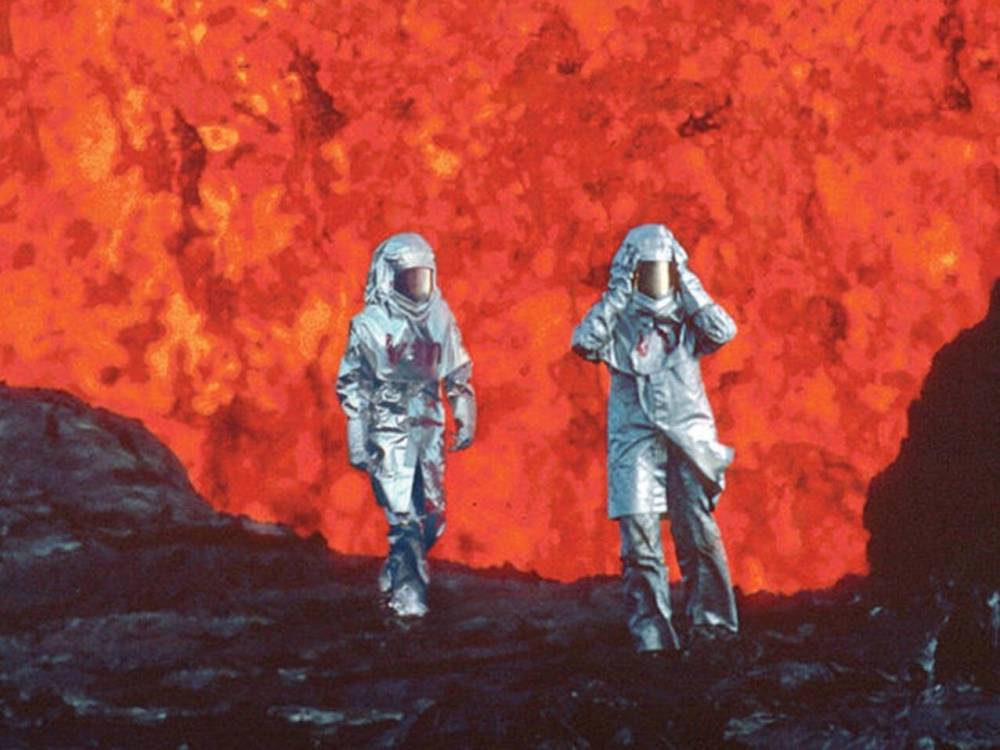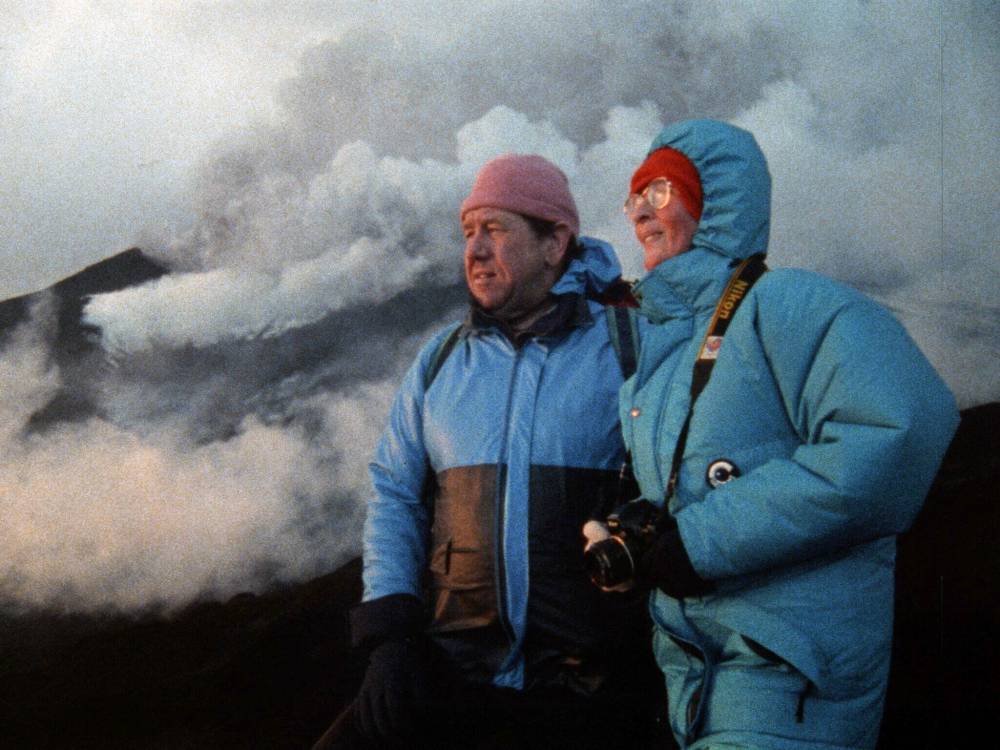Lava affair
Dramatic documentary captures beauty, volatility of volcanoes and marriage
Advertisement
Read this article for free:
or
Already have an account? Log in here »
To continue reading, please subscribe:
Monthly Digital Subscription
$0 for the first 4 weeks*
- Enjoy unlimited reading on winnipegfreepress.com
- Read the E-Edition, our digital replica newspaper
- Access News Break, our award-winning app
- Play interactive puzzles
*No charge for 4 weeks then price increases to the regular rate of $19.00 plus GST every four weeks. Offer available to new and qualified returning subscribers only. Cancel any time.
Monthly Digital Subscription
$4.75/week*
- Enjoy unlimited reading on winnipegfreepress.com
- Read the E-Edition, our digital replica newspaper
- Access News Break, our award-winning app
- Play interactive puzzles
*Billed as $19 plus GST every four weeks. Cancel any time.
To continue reading, please subscribe:
Add Free Press access to your Brandon Sun subscription for only an additional
$1 for the first 4 weeks*
*Your next subscription payment will increase by $1.00 and you will be charged $16.99 plus GST for four weeks. After four weeks, your payment will increase to $23.99 plus GST every four weeks.
Read unlimited articles for free today:
or
Already have an account? Log in here »
Hey there, time traveller!
This article was published 18/08/2022 (1208 days ago), so information in it may no longer be current.
In this visually stunning, emotionally evocative documentary about married volcanologists Katia and Maurice Krafft, director Sara Dosa (The Seer and the Unseen, The Last Season) shows us the wonder of volcanoes. Just as compelling, though, is the Kraffts’ pursuit of that wonder.
Fire of Love works at both the massive scale of nature and the human scale of the scientists by calling up the power of the Kraffts’ passion and curiosity, which runs as hot as the volcanoes they study, ending only with their deaths in 1991 during the eruption of Japan’s Mount Unzen.
This is not a spoiler: The film announces the date of the Kraffts’ deaths in its first minutes, so that we live with that doom hanging over our heads, just as the Kraffts themselves did. As Maurice remarks cheerfully about his compulsion to get as close as he can to streams of molten lava and choking clouds of hot ash: “It will kill me one day, but that doesn’t bother me at all.”
Sandbox Films Heart burn: Married scientists Katia and Maurice Krafft spent their lives travelling the world to study volcanoes.
Perhaps this approach came naturally. Katia and Maurice were both from the Alsace region of France, and they met as students in the turbulent 1960s, when an existentialist approach to life and death was en vogue.
After graduation — she as a geochemist, he as a geologist — they become freelance volcanologists, travelling together to hot spots around the world, financed in part by the proceeds of their popular books and films. They lived balanced on the edge of a volcano (often literally), studying this volatile natural phenomenon in all its beauty and destructiveness.
To convey the drama and spectacle of this lifelong project, Dosa uses a direct approach. There are no talking heads, no postmortem analyses by colleagues and friends, no re-enactments. Instead, she crafts her film from the massive archive of footage the Kraffts left behind, adding only the occasional burst of animation, as well as Miranda July’s quiet narration (scripted by Shane Boris, Erin Casper and Jocelyne Chaput). This narration, which helps shape the material, can be poetic and insightful but occasionally veers over into florid vagueness.
The footage, much of it decades old, is made for the big screen. For movie-lovers who have become numbed by disaster-movie CGI, it’s a revelation to see the incredible force of unadorned nature.
And while the film spends a lot of time yearning for the sublime, there are little moments of human comedy. The Kraffts often show up in matching red knit caps, giving the footage a Wes Anderson kind of Life Aquatic vibe.
In other scenes, they put on fire-resistant silver suits with shiny metal helmets, which have them looking like something from a 1950s sci-fi B-movie.
The film begins by showing what the Kraffts classify as red volcanoes, which are characterized by fiery eruptions and rivers of lava but are actually safer to be around. After being horrified and humbled by the 1985 disaster in Armero, Colombia, in which mudslides set off by a volcanic eruption killed an estimated 25,000 people, they concentrated on the unpredictable and much more deadly grey volcanoes, and on trying to implement effective early-warning systems.
Sandbox Films Maurice Krafft, left, and Katia Krafft died in 1991 during the eruption of Japan’s Mount Unzen.
Dosa and the writers may be using the Kraffts’ footage, but they also bring in their own point of view. There are speculations about the mysteries of the Kraffts’ unconventional marriage, as well as some gentle questions about their motivations.
Mostly, the Kraffts seem driven by the pure pursuit of knowledge, especially knowledge that can save lives. There are some hints about their tendencies to obsession, maybe even hubris, as when Maurice heads out in a flea-market dinghy onto a lake of sulfuric acid, whose waters are dangerous enough to dissolve the steel cable he uses to lower a sample tube. Certainly, a filmmaker like Werner Herzog would have gone darker with this material.
Dosa goes another way. Even though she never met her subjects, you can feel her affection and respect for them. As this ultimately hopeful film suggests, “understanding is a kind of love,” and that holds true for cinema as well as science.
alison.gillmor@freepress.mb.ca

Studying at the University of Winnipeg and later Toronto’s York University, Alison Gillmor planned to become an art historian. She ended up catching the journalism bug when she started as visual arts reviewer at the Winnipeg Free Press in 1992.
Our newsroom depends on a growing audience of readers to power our journalism. If you are not a paid reader, please consider becoming a subscriber.
Our newsroom depends on its audience of readers to power our journalism. Thank you for your support.

